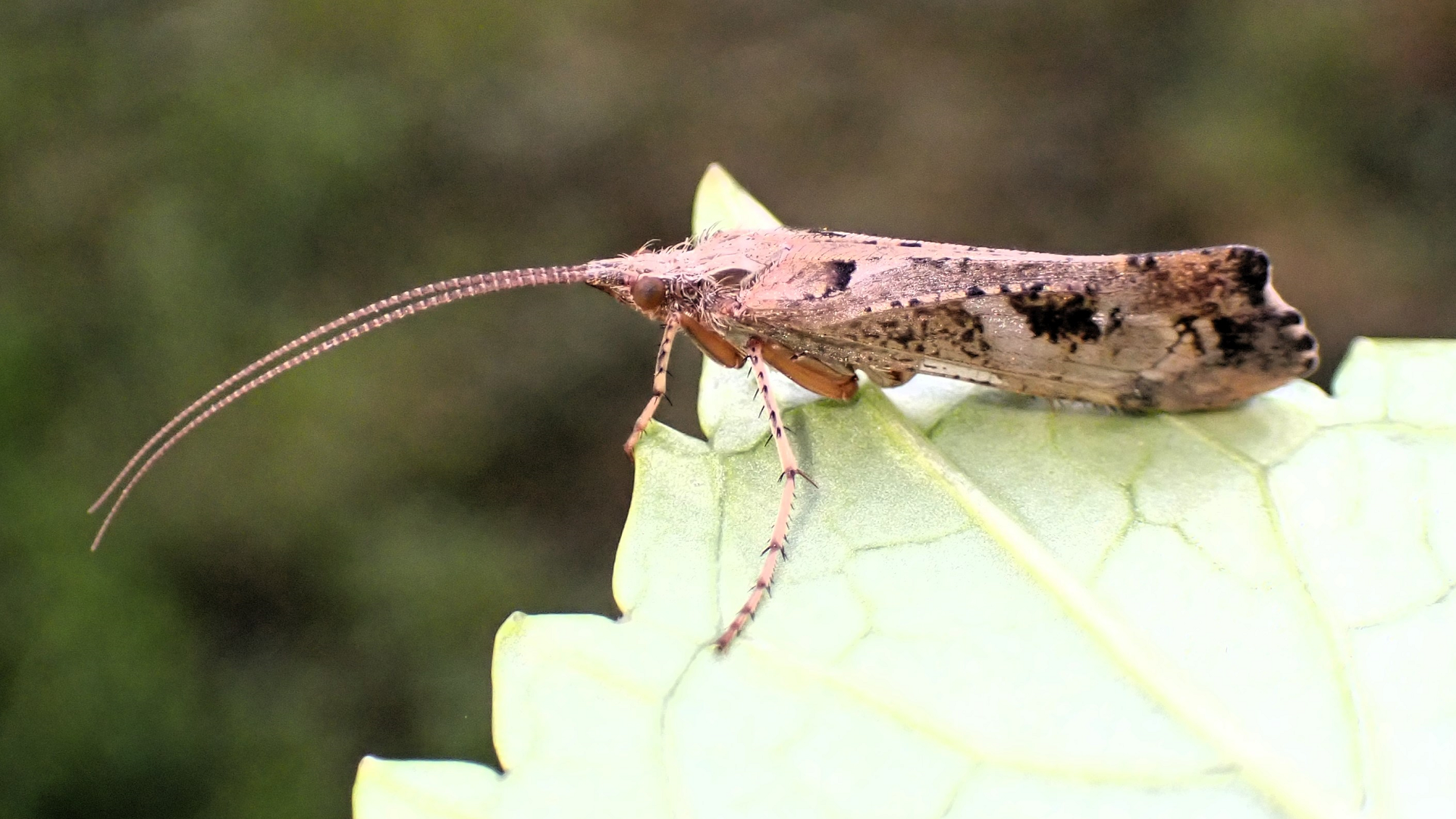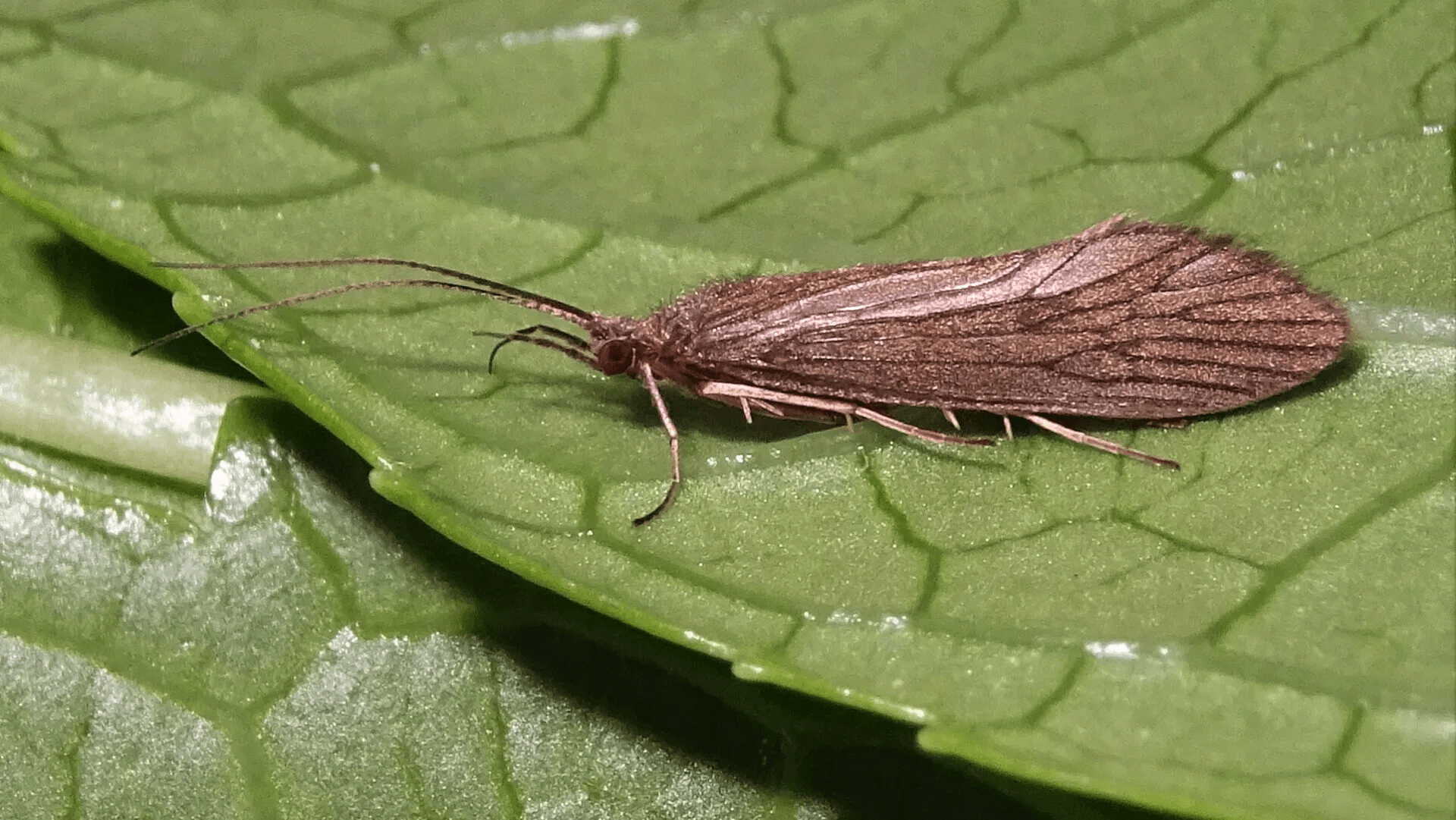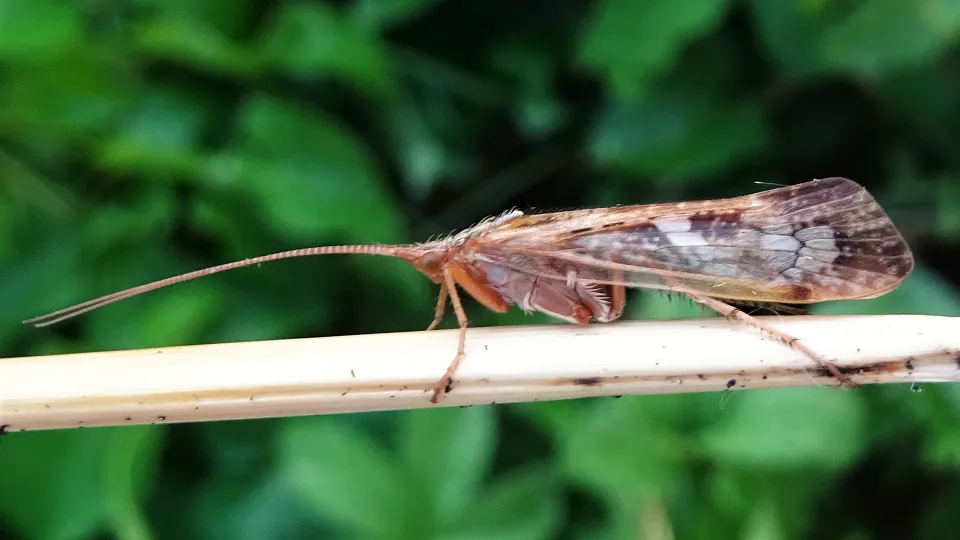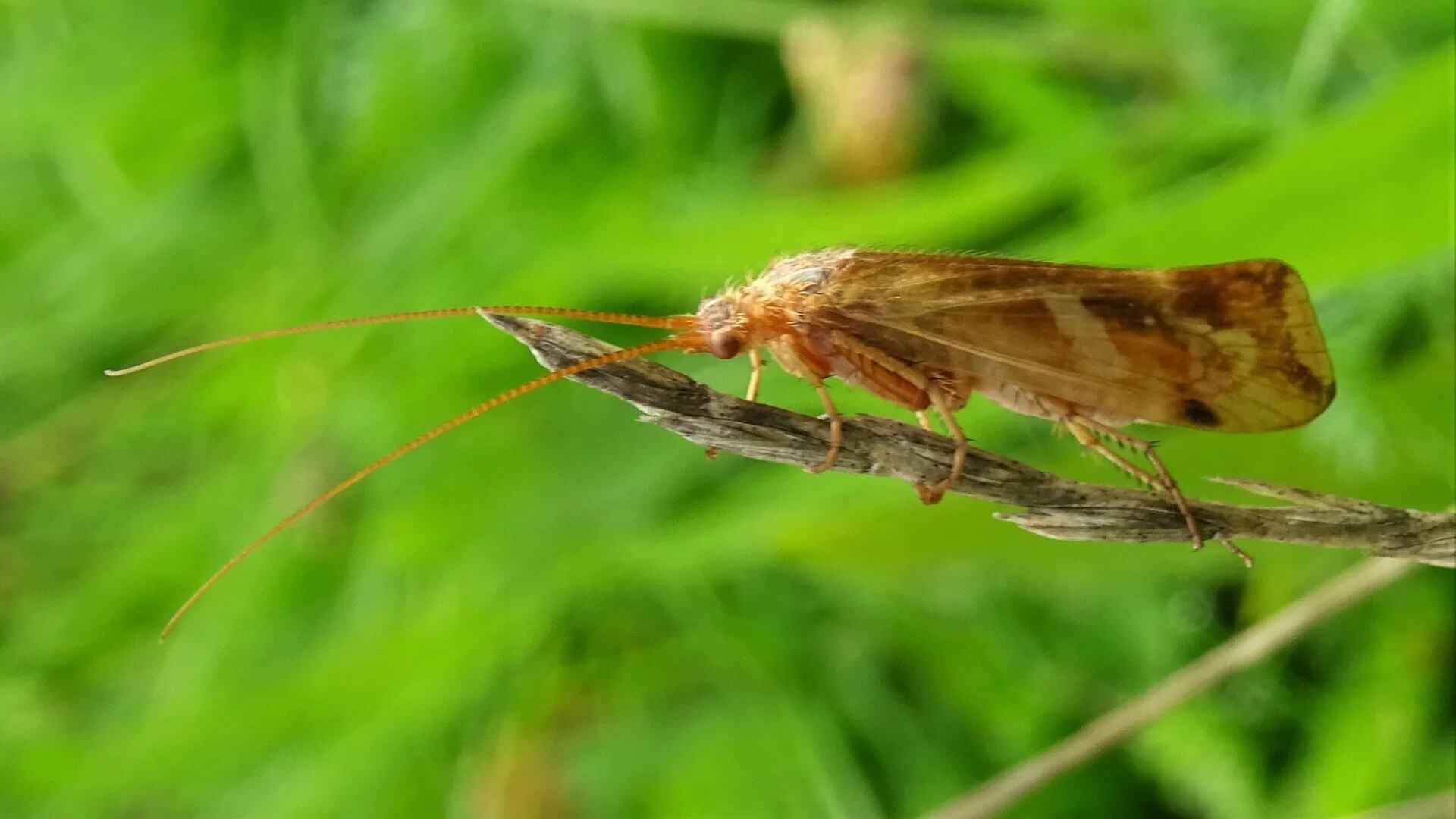Caddisflies usually live for a couple of weeks as adults during which they do not feed. They die soon after mating. Their larvae are aquatic creatures that feed in freshwater habitats.
Name: Mottled Sedge Caddisfly Glyphotaelius pellucidus
Description: This species has a diagnostic notch on the outer edge of the brown forewings. Males have light and dark markings which are mainly missing in females. Adults fly May to June and again from August to October. .
Habitat: Inhabits woodland usually near streams and ponds.

#
Name: Small Red Sedge Tinodes waeneri
Description: Reddish-brown caddisfly with distinct veins. Adults fly May to September.
Habitat: Found near lakes, streams and ponds.

#
Name: Cinnamon Sedge Caddisfly Limnephilus marmoratus
Description: Normally more strongly marked than L. rhombicus which is sometimes quite similar. The wings on this specimen are very marbled and the stigma is not strong enough to be L. decipiens.
Habitat: Near lakes and ponds from June to October.

#
Name: Crescent Cinnamon Sedge Limnephilus lunatus
Description: Body colour ranges from light to dark brown. The latin name 'lunatus' is a reference to the diagnostic pale half moon marking on the rear edge of the wing. The larval case is built from leaf pieces, grains of sand and other debris.
Habitat: Seen from May until November near lakes, ponds and streams.

#
© hainaultforest.net. All rights reserved.

